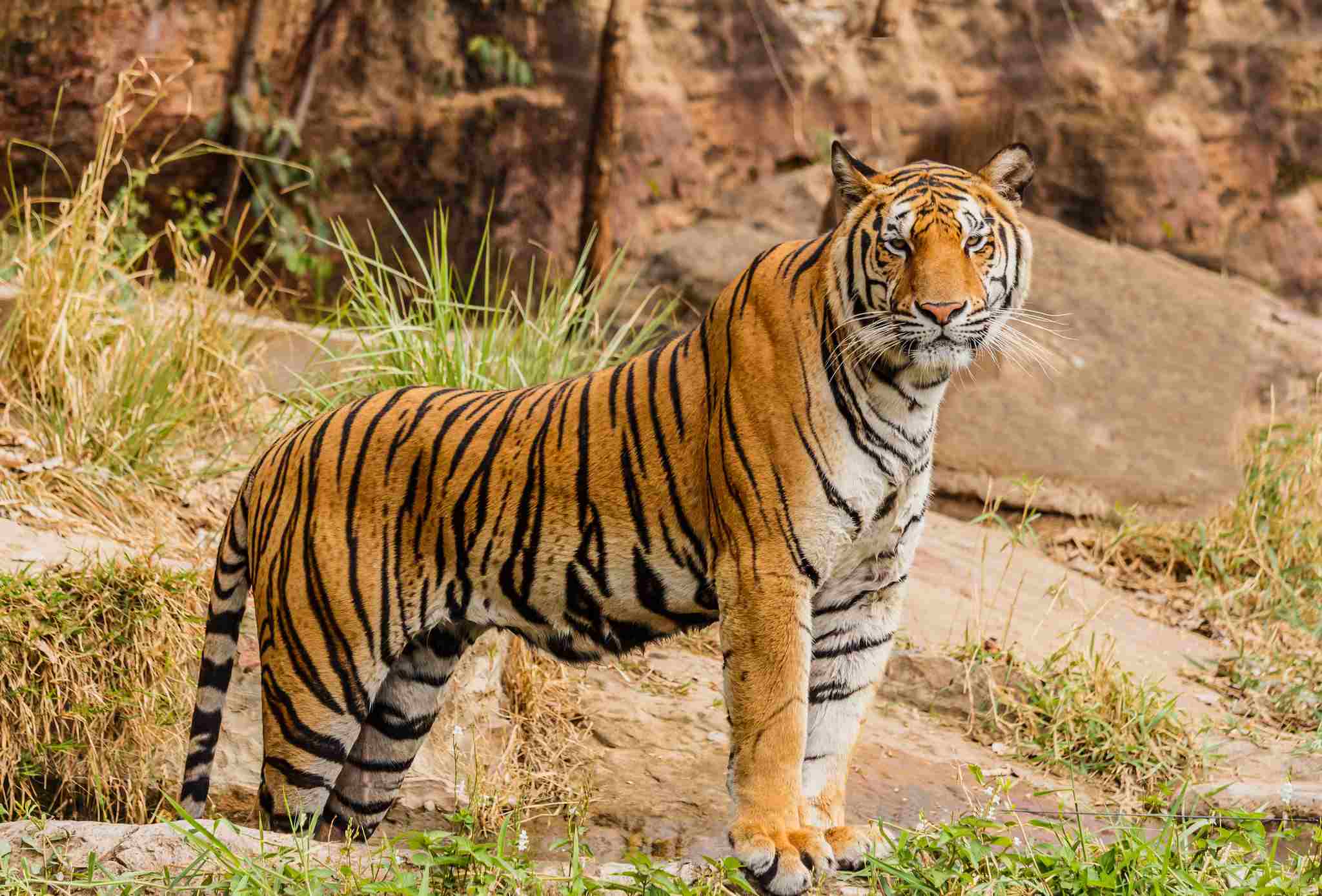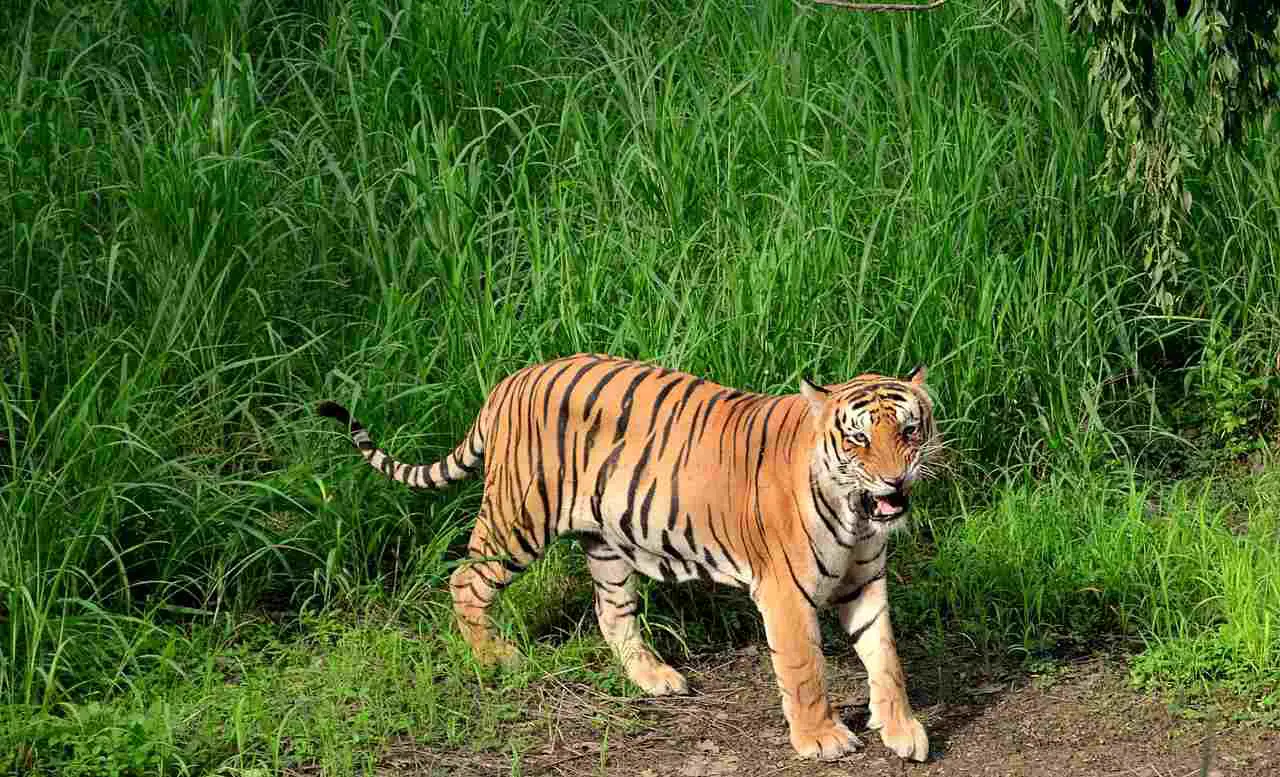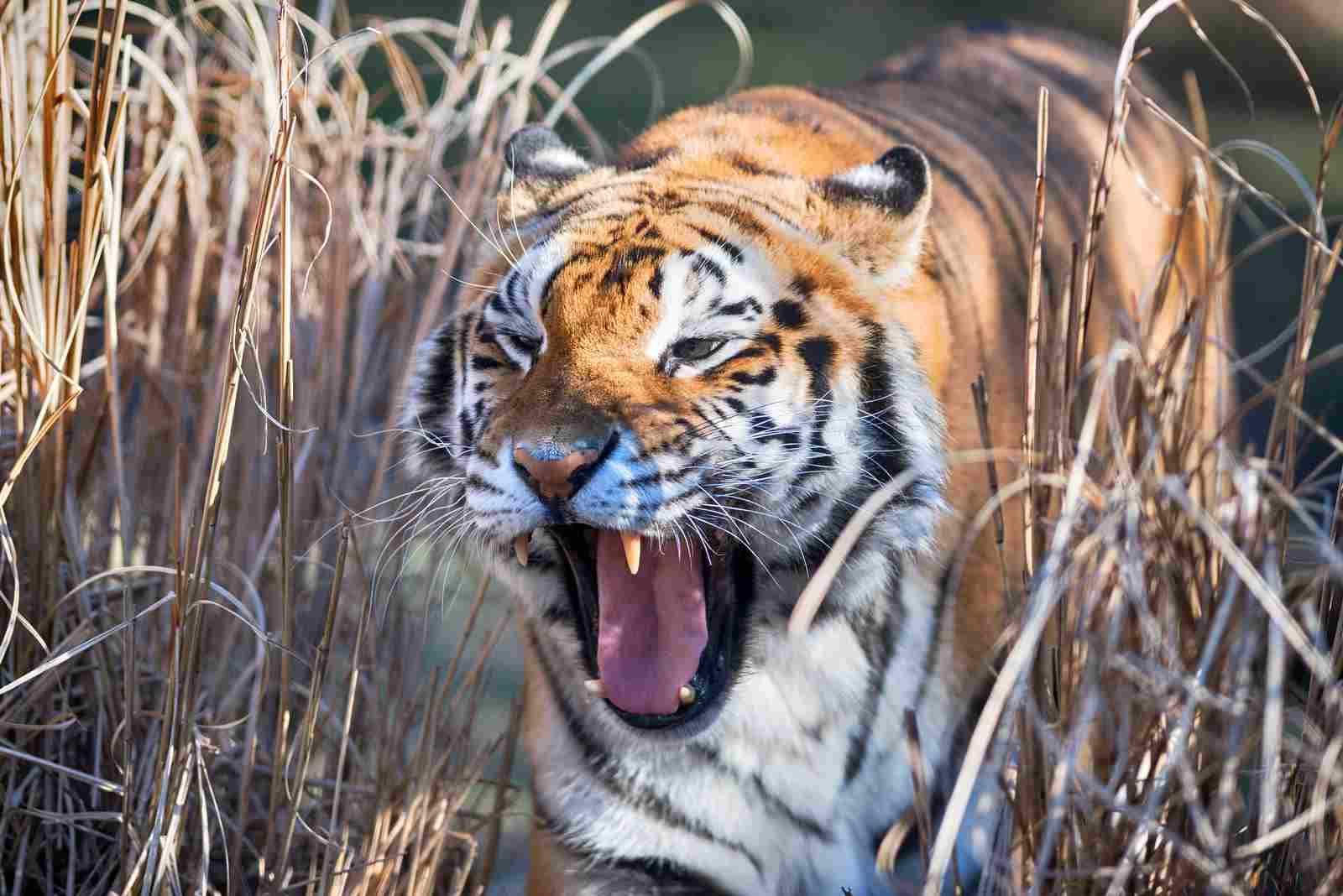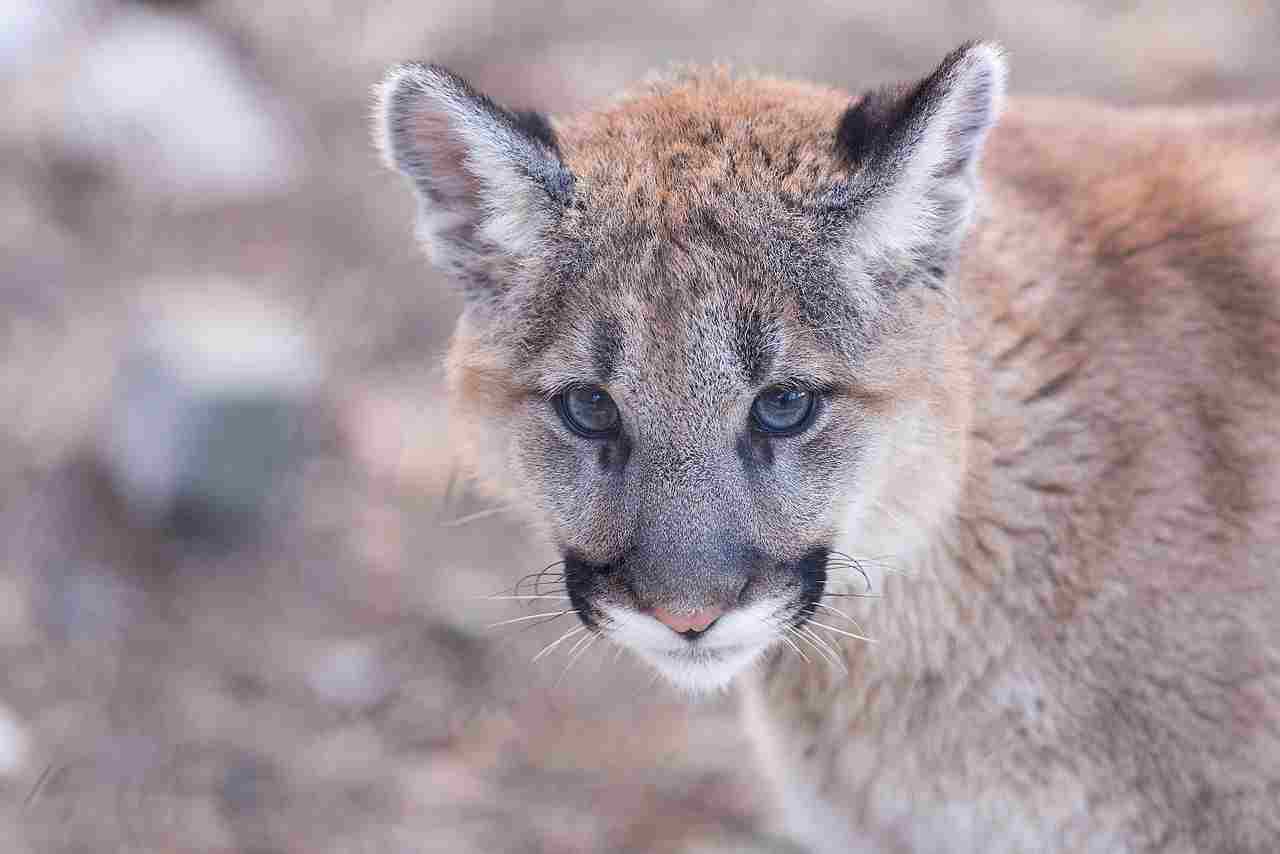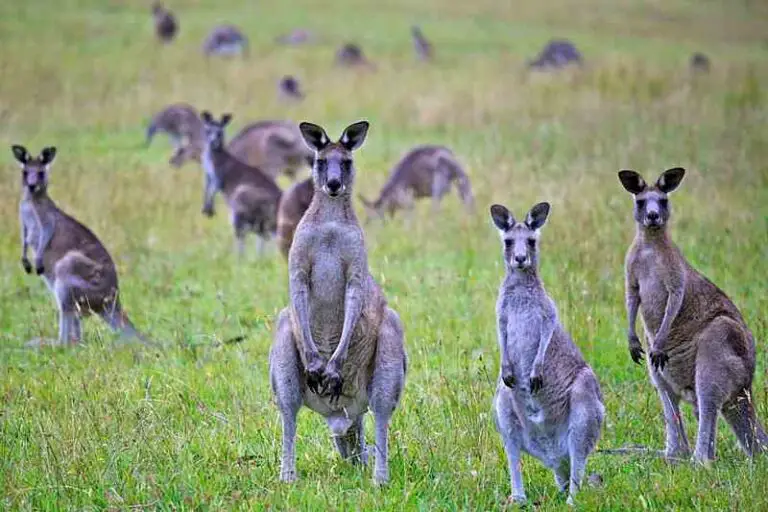Jaguar Vs Tiger Size, Weight, Ecological Comparison
The size and weight advantage of a tiger over a jaguar is one of the key factors that contribute to its dominance in a fight. Tigers are much larger and heavier than jaguars, giving them a physical advantage. This increased size and weight also translates into greater strength, making tigers more formidable opponents.
While jaguars are also large and strong, they are outmatched by the sheer size and weight of a tiger. This size and weight advantage plays a crucial role in determining the outcome of a physical confrontation between the two big cats.
Reasons Why a Tiger Will Win a Jaguar In a Fight/Physical Confrontation
I). Size and Weight Advantage
One of the main reasons why a tiger would win in a fight against a jaguar is the significant size and weight advantage it possesses. Tigers are the largest big cats in the world, with males reaching lengths of up to 10 feet and weighing between 400 to 600 pounds.
On the other hand, jaguars are smaller, with males averaging around 6 feet in length and weighing between 150 to 250 pounds. This size difference gives tigers a clear physical advantage, allowing them to overpower and dominate jaguars in a physical confrontation. The sheer size and weight of a tiger make it a formidable opponent that a jaguar would struggle to match.
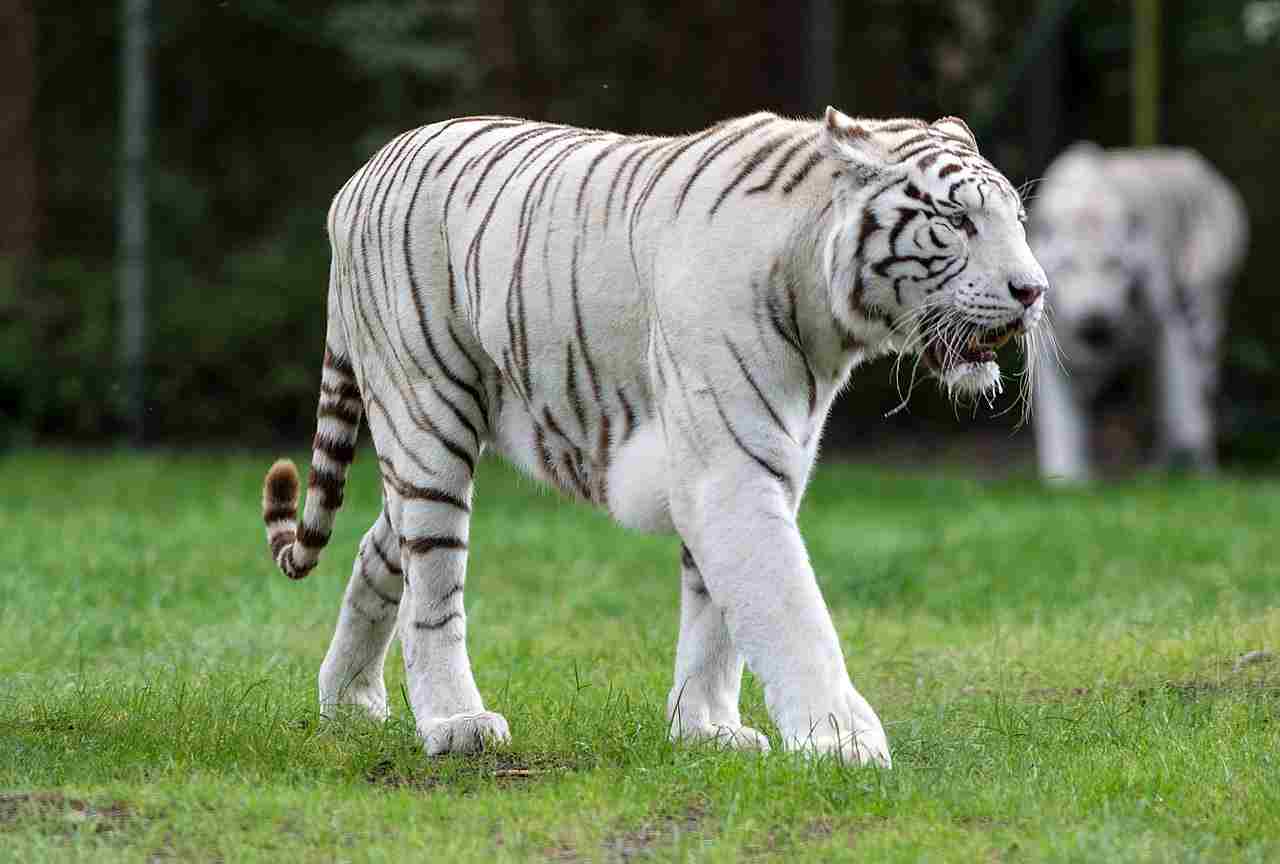
II). Muscle Mass and Endurance
In addition to their larger size, tigers also have a greater muscle mass and endurance compared to jaguars. Tigers are built for strength and power, with well-developed muscles that enable them to take down large prey and engage in fierce battles.
Their muscular physique gives them the ability to deliver powerful blows and withstand attacks from other animals. Jaguars, while strong in their own right, do not possess the same level of muscle mass and endurance as tigers. This difference in physical attributes further tilts the odds in favor of tigers in a fight or physical confrontation.
III). Tigers are More Aggressive Than Jaguars
Another reason why a tiger would likely win in a fight against a jaguar is their higher level of aggression. Tigers are known for their aggressive nature and are more likely to initiate a confrontation. They have been observed to be more territorial and willing to defend their territory against intruders.
Jaguars, although they can be aggressive when provoked, are generally more elusive and prefer to avoid conflicts whenever possible. This difference in aggression levels gives tigers an advantage in a fight, as they are more likely to engage in combat and assert their dominance over a jaguar.
Generally, the combination of size and weight advantage, greater muscle mass and endurance, and higher aggression levels make tigers the favored contender in a fight or physical confrontation with a jaguar.
*Details of Comparison
| Feature | Tiger | Jaguar |
| Size and Weight | Larger and heavier (Males: 400-600 lbs, Length: 9-11 ft) |
Smaller and lighter (Males: 150-250 lbs, Length: 5-6 ft)
|
| Muscle Mass and Endurance | Greater muscle mass and endurance |
Strong but with slightly less muscle mass and endurance
|
| Aggression | More aggressive and territorial |
Less aggressive and more elusive
|
| Appearance | Orange coat with black stripes |
Yellow/tan coat with rosettes
|
| Habitat | Forests, grasslands, mangroves |
Rainforests, swamps
|
| Speed and Agility | Fast and powerful sprint bursts (40-50 mph) |
Agile and stealthy climbers
|
| Bite Force | Strongest among big cats (1050-1300 psi) |
Very strong (1000-2000 psi)
|
| Overall Physical Capacity | Stronger due to size, weight, and muscle mass |
Strong but at a disadvantage against a tiger
|
| Lifespan | 10-15 years in wild, 20-25 years in captivity |
12-15 years in wild, 20+ years in captivity
|
| Behavior | Solitary hunters, opportunistic feeders |
More flexible social structure, wider prey range
|
| Reproduction | Larger litters (2-4 cubs) |
Smaller litters (1-4 cubs)
|
| Danger to Humans | More dangerous due to size and aggression |
Less likely to threaten humans
|
| Intelligence | Highly intelligent with strategic hunting and problem-solving |
Intelligent with stealthy and adaptable hunting techniques
|
| Tracks | Larger with prominent claw marks |
Smaller with less visible claw marks
|
| Conservation Status | Endangered |
Near Threatened
|
Key Points:
- Tigers are significantly larger and stronger than jaguars, giving them an advantage in physical confrontations.
- Jaguars are more agile and stealthy, better suited for hunting in dense forests.
- Both species face serious threats due to habitat loss, poaching, and human-wildlife conflict.
1). Taxonomy
The taxonomy of the jaguar (Panthera onca) and the tiger (Panthera tigris) places them in the same genus, Panthera, but different species. The jaguar belongs to the species onca, while the tiger belongs to the species tigris.
Both animals share common characteristics as members of the Panthera genus, such as their muscular build, sharp retractable claws, and ability to roar. However, they also have distinct features that set them apart.
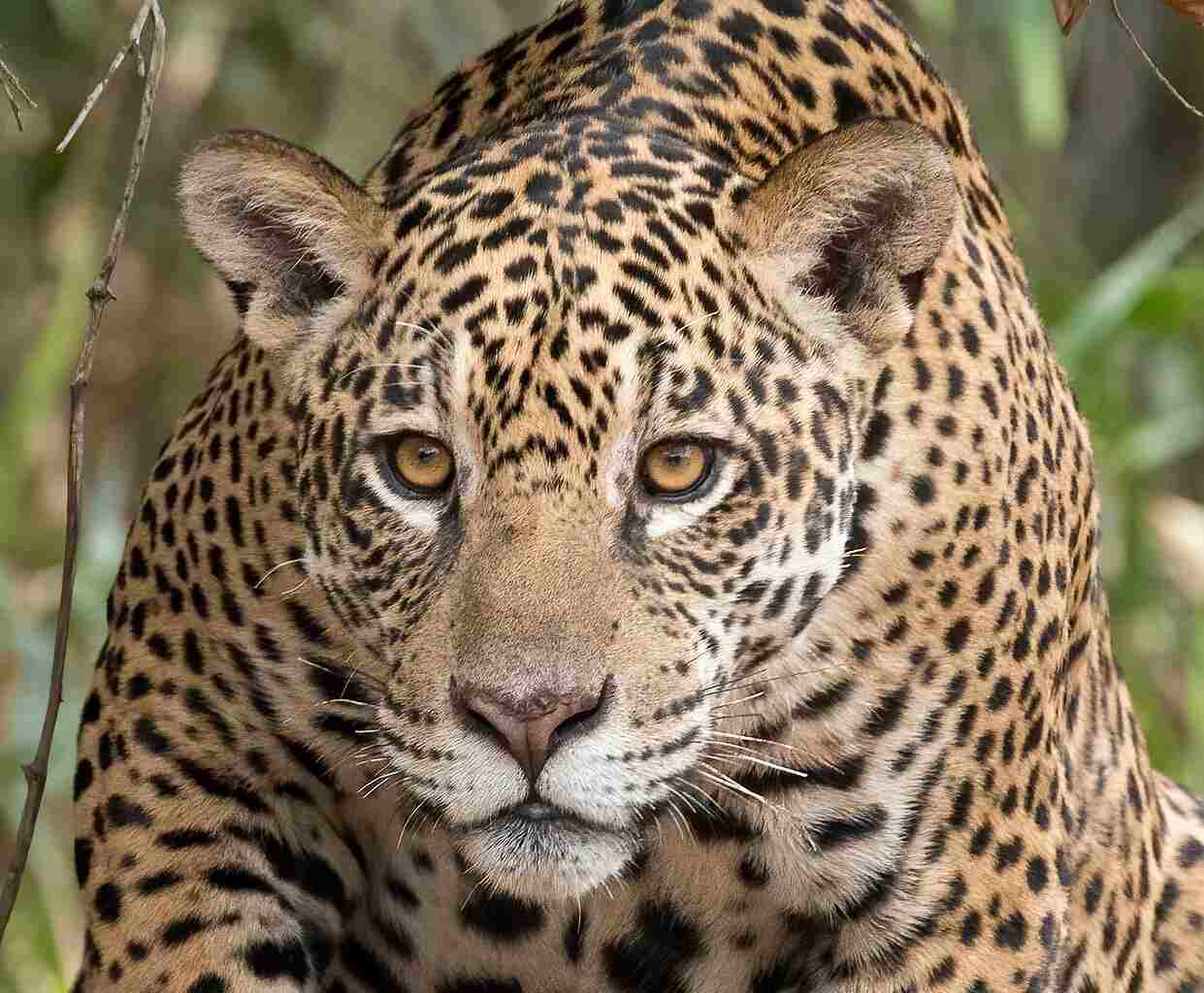
2). Appearance
The appearance of both the jaguar and the tiger is striking and unique. Their coats, fur, and skin play a crucial role in their survival and adaptation to their respective habitats.
The jaguar has a beautiful coat with a distinctive pattern of rosettes, which are large spots with smaller spots inside them. This camouflage helps the jaguar blend into its surroundings, making it an effective predator. Its sturdy and muscular build gives it a powerful and agile stature, allowing it to navigate through dense vegetation and climb trees with ease.
On the other hand, the tiger’s coat is characterized by bold, dark stripes that provide excellent camouflage in the grasslands and forests where it resides. Its large size and robust build make it an imposing presence in its environment. Tigers are known for their strength and agility, which enable them to take down large prey.
When comparing the appearance of these two majestic big cats, it is clear that they have distinct features that suit their respective habitats and hunting strategies. The jaguar’s rosettes and muscular build make it well-suited for stealthy hunting in dense forests, while the tiger’s stripes and powerful stature make it a formidable predator in open grasslands and forests.
3). Size
The jaguar typically measures around 5 to 6 feet in total body length, with an additional 2 to 3 feet for the tail. At the shoulders, it stands at a height of approximately 2.5 to 3 feet. On the other hand, the tiger surpasses the jaguar in size, with an average total body length ranging from 9 to 11 feet, and a tail that adds another 3 to 4 feet. At the shoulders, the tiger stands at an impressive height of 3 to 3.5 feet.
The jaguar’s size allows it to navigate through dense vegetation and climb trees with agility, while the tiger’s larger stature gives it a commanding presence in its environment. The difference in size between these two big cats is a reflection of their respective habitats and hunting strategies. The jaguar’s smaller size is advantageous for stealthy hunting in the dense forests it inhabits, while the tiger’s larger size is beneficial for taking down larger prey in open grasslands and forests.
While the jaguar is smaller in size compared to the tiger, it is important to note that size alone does not determine the success of these big cats in their respective ecosystems.
4). Weight
When comparing the weight of a jaguar and a tiger, it becomes evident that the tiger outweighs the jaguar significantly. On average, a jaguar weighs between 100 to 250 pounds, with males being larger than females. In contrast, a tiger can weigh anywhere from 200 to 670 pounds, with males being much larger than females.
The difference in weight between these two big cats is a result of their distinct habitats and hunting preferences. Jaguars are native to the dense forests of the Americas, where their smaller size allows them to navigate through the vegetation with ease. Their agility and strength enable them to take down prey efficiently, despite their relatively smaller weight.
On the other hand, tigers inhabit a range of environments, including grasslands and forests. Their larger size and weight give them an advantage when hunting larger prey such as deer, wild boar, and even buffalo. The sheer strength and power of a tiger, combined with its weight, make it a formidable predator in its ecosystem.
5). Speed and Agility
Jaguars are known for their exceptional agility, allowing them to navigate through dense forests with ease. Their muscular build and flexible bodies enable them to climb trees, swim, and leap long distances. With their quick reflexes and stealthy movements, jaguars can surprise their prey and launch powerful attacks.
On the other hand, tigers are renowned for their incredible speed and agility, especially when chasing down prey. They can reach speeds of up to 40 to 50 miles per hour in short bursts, making them one of the fastest land animals. Tigers are also skilled swimmers and can effortlessly cross rivers and lakes. Their agility is evident in their ability to leap long distances and climb trees when necessary.
While both jaguars and tigers possess impressive speed and agility, there are slight differences between them. Jaguars excel in navigating through dense vegetation, utilizing their agility to their advantage. Tigers, on the other hand, rely more on their speed to chase down prey in open grasslands. These differences in habitat and hunting strategies have shaped the specific adaptations of each species.
6). Bite Force
Jaguars have an impressive bite force, with estimates ranging from 1,000 to 2,000 psi. This powerful bite allows them to deliver a lethal bite to their prey, piercing through bones and crushing the skull. With such force, jaguars can quickly immobilize their prey and ensure a successful kill.
On the other hand, tigers possess an even stronger bite force. With estimates ranging from 1,050 to 1,300 psi, tigers have one of the strongest bites among big cats. This immense bite force enables them to take down large prey, such as deer and wild boar, with ease. Tigers can deliver a devastating bite that can break bones and cause severe damage to their prey.
Therefore, both jaguars and tigers have formidable bite forces that contribute to their hunting prowess. However, tigers have a slightly stronger bite force, giving them an advantage when it comes to overpowering larger prey.
7). Overall Physical Capacity (Which is Stronger?)
On average, tigers are notably stronger than jaguars, owing to their superior size, weight and muscular endurance.
When comparing the overall physical capacity of tigers and jaguars, it becomes evident that tigers have the advantage. Tigers are larger and heavier than jaguars, with more muscle mass and endurance. This gives them a significant edge in a violent confrontation between the two.
In terms of size, tigers can grow up to 11 feet in length and weigh up to 660 pounds, while jaguars typically reach lengths of 6 feet and weigh around 200 pounds. The sheer size and weight of tigers make them more formidable opponents.
Furthermore, tigers possess greater muscle mass, allowing them to exert more force and power in their movements. This strength enables them to overpower their prey and deliver devastating blows. Jaguars, although strong in their own right, cannot match the sheer physical strength of tigers.
Endurance is another crucial factor in determining overall physical capacity. Tigers have been known to chase their prey for long distances, displaying remarkable stamina. This endurance gives them an advantage in prolonged confrontations, as they can outlast their opponents.
Therefore, when considering the overall physical capacity, tigers surpass jaguars in terms of strength, size, weight, muscle mass, and endurance. These factors contribute to their dominance in violent confrontations and make them the stronger of the two big cats.
8). Habitat
Tigers are primarily found in the dense forests and grasslands of Asia, including countries like India, Russia, and Indonesia. They are well-adapted to these ecosystems, utilizing the cover of vegetation to stalk and ambush their prey. Tigers are known to be excellent swimmers and are often found near bodies of water, such as rivers and lakes.
On the other hand, jaguars are native to the Americas, particularly in Central and South America. They inhabit a variety of habitats, including rainforests, swamps, and grasslands. Jaguars are known for their ability to climb trees and are often found near water sources, as they are skilled hunters of aquatic prey.
While both tigers and jaguars have overlapping habitats in terms of forests and grasslands, their geographic ranges are distinct. Tigers have a wider range, spanning across multiple countries in Asia, while jaguars are more localized to the Americas.
Therefore, the habitat preferences and geographic ranges of tigers and jaguars differ, with tigers inhabiting the forests and grasslands of Asia and jaguars being native to the Americas.
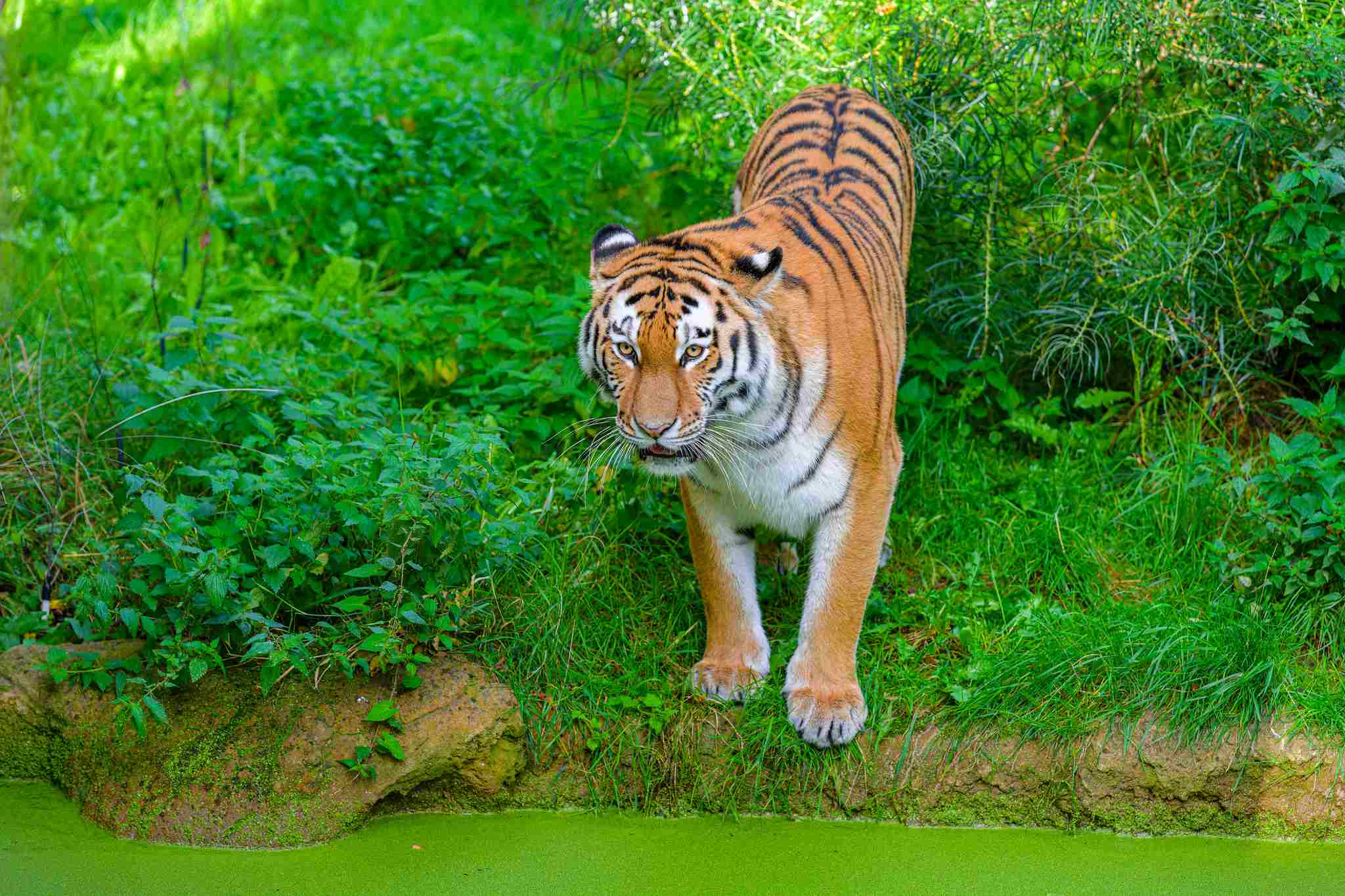
9). Lifespan
Tigers have an average lifespan of about 10 to 15 years in the wild, although some individuals have been known to live up to 20 years. In captivity, where they are protected from natural threats and have access to proper healthcare, tigers can live up to 25 years or more.
On the other hand, jaguars have a slightly shorter lifespan in the wild, averaging around 12 to 15 years. However, like tigers, jaguars can live longer in captivity, with some individuals reaching up to 20 years or more.
The lifespan of both tigers and jaguars can be influenced by factors such as habitat quality, availability of prey, competition, and human activities. In areas where their habitats are threatened or fragmented, their lifespan may be shorter due to increased stress and reduced access to resources.
It is worth noting that these lifespan estimates are averages and can vary depending on individual circumstances. Factors such as genetics, diet, and overall health can also play a role in determining the lifespan of both tigers and jaguars.
Therefore, while tigers generally have a slightly longer lifespan than jaguars, both species can live for over a decade in the wild and even longer in captivity.
10). Behavior
When comparing the behavior of tigers and jaguars, several key aspects come into play. One important behavior to consider is feeding. Both tigers and jaguars are carnivorous predators, relying on hunting to obtain their food. They exhibit similar hunting strategies, using stealth and ambush techniques to capture their prey. However, tigers are known to be more opportunistic hunters, adapting their diet to the available prey in their habitat. On the other hand, jaguars have a preference for larger prey, such as deer and peccaries.
Aggression is another behavior that can be compared between the two species. Both tigers and jaguars are territorial animals, defending their territories from intruders. However, tigers are generally more aggressive and have been known to engage in fierce battles with other tigers over territory and mating rights. Jaguars, while still displaying territorial behavior, are generally less aggressive in comparison.
Vocalization is an important aspect of communication for both tigers and jaguars. Tigers are known for their deep, resonant roars that can be heard over long distances, serving as a means of communication and territorial marking. Jaguars, on the other hand, have a wider range of vocalizations, including growls, hisses, and even a distinctive “sawing” call.
In terms of social behavior, tigers are generally solitary animals, with males and females coming together only for mating purposes. Jaguars, on the other hand, have been observed to have a more flexible social structure, with individuals sometimes forming loose associations or sharing territories.
When it comes to parenting, both tigers and jaguars exhibit maternal care, with females raising their cubs until they are independent. However, tigers are known to be more protective and involved in the upbringing of their offspring, while jaguars may have a more hands-off approach.
Therefore, while there are similarities in the behavior of tigers and jaguars, there are also notable differences. Tigers are more opportunistic in their feeding habits and tend to be more aggressive, while jaguars have a wider range of vocalizations and exhibit a more flexible social structure.
11). Reproduction
When comparing the reproduction of tigers and jaguars, there are several key differences to consider. Both species are viviparous, meaning they give birth to live young. However, the gestation period differs between the two. Tigers have a gestation period of approximately 100 days, while jaguars have a slightly shorter gestation period of around 90 to 110 days.
In terms of litter size, tigers generally give birth to a litter of 2 to 4 cubs, although larger litters of up to 7 cubs have been recorded. Jaguars, on the other hand, typically have smaller litters of 1 to 4 cubs. This difference in litter size may be attributed to the availability of prey and the size of the respective habitats.
Another notable difference is the age at which tigers and jaguars reach sexual maturity. Tigers typically reach sexual maturity at around 3 to 4 years of age, while jaguars reach sexual maturity slightly earlier, at around 2 to 3 years of age.
When it comes to the mating process, both tigers and jaguars engage in courtship behaviors before mating. Male tigers will mark their territory with scent markings and vocalizations to attract females. Jaguars, on the other hand, engage in a series of behaviors such as rubbing against trees and vocalizing to attract mates.
Therefore, while both tigers and jaguars are viviparous and give birth to live young, there are notable differences in their reproduction. Tigers have a longer gestation period and generally give birth to larger litters, while jaguars have a slightly shorter gestation period and smaller litters. Additionally, the age at which they reach sexual maturity and their courtship behaviors also differ.
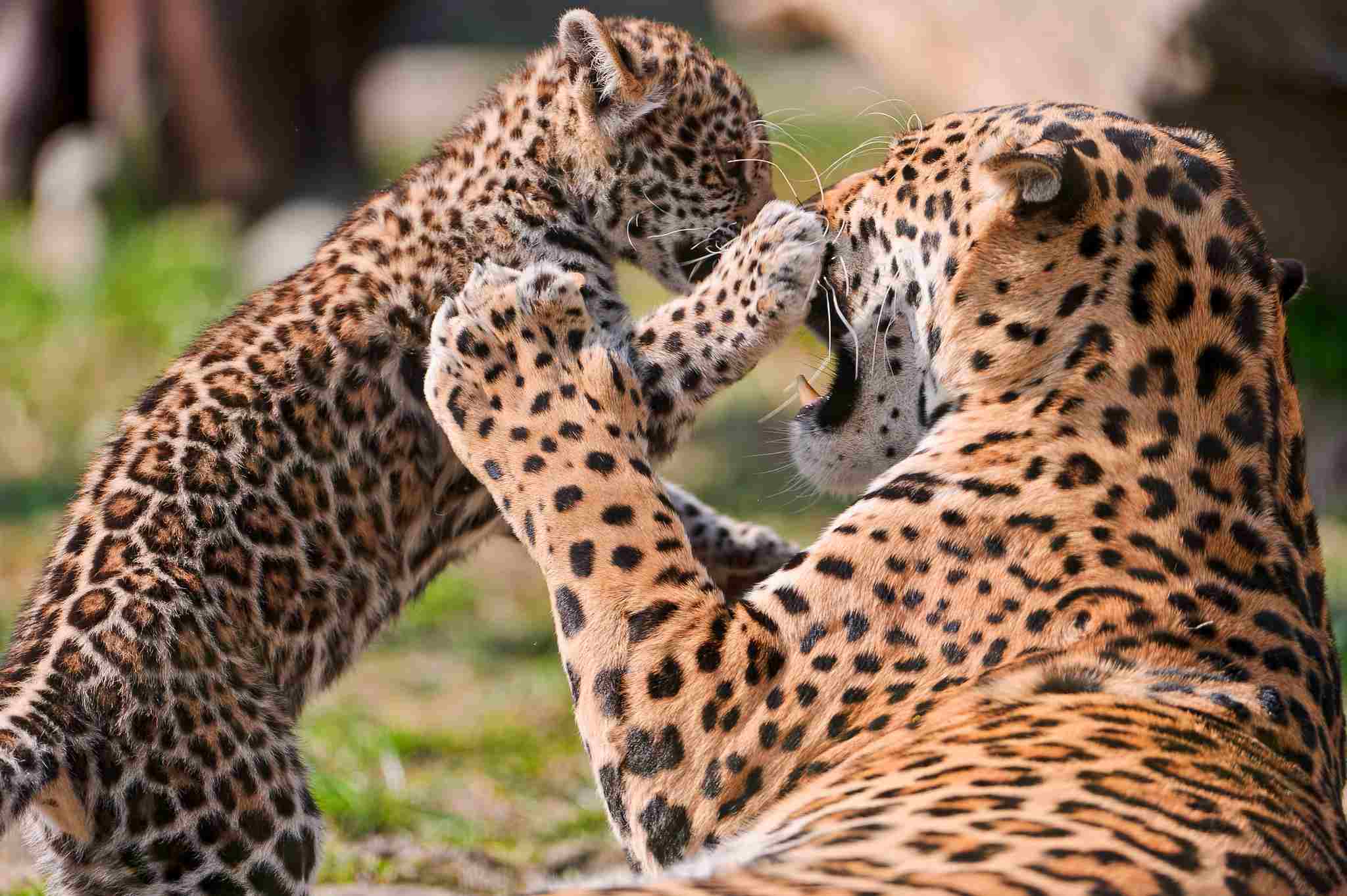
12). Danger Posed to Humans
Tigers are known to be more dangerous than jaguars due to their larger size and more aggressive nature. They have been known to come close to human settlements, especially in areas where their natural habitat has been encroached upon. Tigers have been involved in attacks on humans, and there have been instances of human deaths caused by tigers.
Jaguars, on the other hand, are generally less aggressive towards humans. While they may occasionally come into contact with humans, they are less likely to pose a direct threat. There have been rare cases of jaguar attacks on humans, but they are relatively uncommon compared to tiger attacks.
If you encounter a tiger or a jaguar in the wild, it is important to exercise caution and take appropriate precautions. Avoid approaching the animal and give it a wide berth. Do not provoke or antagonize the animal in any way. If you find yourself in a situation where a tiger or jaguar is exhibiting aggressive behavior, it is best to slowly back away and seek safety.
Therefore, while both tigers and jaguars can pose a danger to humans, tigers are generally considered to be more dangerous due to their larger size and more aggressive nature.
13). Intelligence
When it comes to intelligence, both tigers and jaguars are highly intelligent animals. They possess a remarkable ability to adapt to their surroundings and exhibit complex behaviors. However, it is difficult to determine which of the two is more intelligent as intelligence can be subjective and difficult to measure in animals.
Tigers are known for their strategic hunting techniques. They are patient and observant, carefully planning their approach before launching an attack. Tigers also display problem-solving skills, such as using their paws to open doors or gates. These behaviors suggest a high level of intelligence and adaptability.
Jaguars, on the other hand, are renowned for their stealth and cunning. They are skilled at stalking their prey and are capable of ambushing from trees or dense vegetation. Jaguars also exhibit remarkable swimming abilities, which require a certain level of intelligence to navigate their environment effectively.
In terms of cognitive abilities, both tigers and jaguars have shown the capacity to learn and remember. They can recognize patterns, remember hunting grounds, and navigate their territories efficiently. These cognitive abilities contribute to their survival and success as top predators in their respective habitats.
14). Tracks
Tigers have larger tracks compared to jaguars, with a paw size ranging from 10 to 15 centimeters in diameter. Their tracks also show clear claw marks, which can be up to 10 centimeters long. These characteristics indicate the strength and power of a tiger’s paw.
On the other hand, jaguars have slightly smaller tracks, typically measuring around 7 to 10 centimeters in diameter. Their tracks often lack visible claw marks, as jaguars have the ability to retract their claws when walking. This adaptation allows them to move silently and stealthily through their habitat.
Both tigers and jaguars have four toes on their front and hind paws, making their tracks similar in terms of the number of toe imprints. However, the overall size and shape of the tracks can help differentiate between the two species.
Therefore, while both tigers and jaguars leave distinct tracks, the size, presence of claw marks, and overall shape can provide valuable clues for identification.
15). Conservation Status
The conservation status of both tigers and jaguars is a matter of concern, as both species are endangered or threatened. The main threats to the survival of their wild populations include habitat loss, poaching, and human-wildlife conflict.
Tigers, classified as endangered by the International Union for Conservation of Nature (IUCN), have experienced a significant decline in their numbers due to the destruction and fragmentation of their habitats. Poaching for their body parts, which are highly valued in traditional medicine, also poses a severe threat to their survival. Additionally, conflicts with humans, particularly in areas where their habitats overlap, further endanger their populations.
Jaguars, classified as near threatened by the IUCN, face similar challenges. Deforestation and the conversion of their habitats for agriculture and urbanization have resulted in a loss of suitable territories for jaguars. They are also targeted by poachers for their beautiful fur and body parts. Furthermore, conflicts with humans, such as retaliatory killings for preying on livestock, contribute to the decline of jaguar populations.
Efforts are being made to conserve both species through various initiatives, including the establishment of protected areas, anti-poaching measures, and community-based conservation programs. However, continued conservation efforts and public awareness are crucial to ensure the long-term survival of these magnificent big cats in the wild.
Conclusion
I). SIMILARITIES
In comparing tigers and jaguars, it is evident that these big cats share several similarities. Both species belong to the same family, Felidae, and are known for their powerful build and predatory nature.
They are also similar in terms of their physical characteristics, such as their muscular bodies, sharp claws, and keen senses. Additionally, both tigers and jaguars face similar threats to their survival, including habitat loss, poaching, and human-wildlife conflict.
II). DIFFERENCES
While tigers and jaguars have similarities, there are also notable differences between these majestic felines. One significant difference lies in their size and weight. Tigers are generally larger and heavier than jaguars, with adult males weighing up to 600 pounds, while jaguars typically weigh around 200 pounds. Another difference is their geographic distribution. Tigers are found in various parts of Asia, while jaguars are native to the Americas.
In terms of appearance, tigers have a distinctive orange coat with black stripes, while jaguars have a yellow or tan coat with rosette-shaped markings. Their habitats also differ, with tigers inhabiting a range of ecosystems, including forests, grasslands, and mangroves, while jaguars are primarily found in dense rainforests and swamps.
Furthermore, their behaviors and hunting techniques vary. Tigers are known for their solitary nature and often hunt large prey, such as deer and wild boar. On the other hand, jaguars are more adaptable and can swim and climb trees, allowing them to hunt a wider range of prey, including fish and monkeys.
